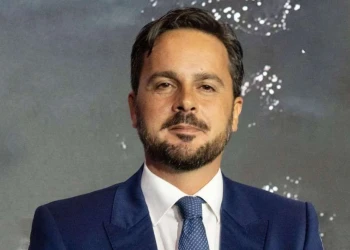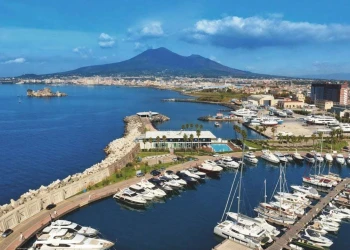
Giorgio Casareto
Portosole: Challenges, Strategies, Sustainability and Future Vision. Interview with General Manager Giorgio Casareto
At a crucial time for the development of tourist ports in Liguria, Sanremo is preparing to enter a phase of profound transformation. Following the start of the "Conferenza dei Servizi" for the redevelopment of Porto Vecchio and the relaunch of Porto Sole’s facilities, we met with Giorgio Casareto, who is leading this ambitious project.
With him, we discussed challenges, strategies, sustainability, and future vision: a path aimed at consolidating Sanremo's role on the international yachting scene, with modern infrastructures, services capable of meeting the new demands of the market, and strong integration with the urban fabric. A major investment, not only economically, but also culturally and socially, with a long-term outlook.
Pressmare - When you were assigned the shipyard management responsibilities as well, what were your initial thoughts?
Giorgio Casareto - I must say that when I was asked to take charge of the shipyard too — while discussions were still ongoing — I had a moment of reflection. It wasn't an easy decision. I asked myself how to approach it, how to manage it, and I thought it was worth trying. Those who work in this sector know it’s never simple, especially in contexts like this where company interests must come before personal ones. Having worked for many years with Vitelli taught me a lot in this regard.
PM - Beyond shipyard management, there are important development projects underway, correct?
GC - Yes, absolutely. We are working on several projects, some of which are particularly significant. The most important today is the redevelopment of Porto Vecchio. It’s a complex, strategic project involving not only the port itself but also a significant part of the city.
A few weeks ago, we initiated the Conferenza dei Servizi and are now addressing crucial issues with the territory, associations, and stakeholders. It’s a major investment — around 70 million euros — and a significant part of this is dedicated to urban redevelopment, to make the area more modern, more accessible, and better integrated with the city.
PM - How is the dialogue with the local community progressing?
GC - As always, there are differing opinions. Part of the city is strongly pushing for the project to move forward, while another part inevitably shows resistance to change. This is natural. What we are trying to do — as I learned from my experience in Livorno and other ports — is to mediate, to find solutions that protect everyone's interests. It's a balancing act: you cover one side and uncover another. But there is the determination of the ownership, the will of the city, and now also the formal support of the Conferenza dei Servizi. All positive signs.
PM - One of the most discussed aspects is the environmental sustainability of the new port. What do you have planned on that front?
GC - Sustainability is one of the pillars of the project. For example, we are designing a centralized system for the collection of wastewater from boats to eliminate truck traffic and the risk of accidental spills. We are also completely rethinking the electrical systems, increasing shore power capacity to meet the needs of large modern yachts. We're talking about vessels now requiring 400 amps of supply, and our docks must be ready.
In parallel, Porto Sole will undergo an important but targeted "restyling." The goal is to modernize existing infrastructures — internal roads, access points, docks — to better separate pedestrian and vehicle traffic, in line with the standards of today’s most modern tourist ports.
PM - Concretely, what structural improvements will we see?
GC - At Porto Sole, we will proceed with a "light" but meaningful redevelopment: new internal roads, expansion and optimization of berths, and modernization of technological systems.
We are also working to increase berthing capacity for larger yachts. Currently, the average size is 35–40 meters, but the goal is to consistently accommodate 50-meter yachts.
At Porto Vecchio, the situation is different: the available physical space is what it is. Nevertheless, we are trying to push the average berth size from 50 to 55 meters and to secure four berths for yachts up to 90 meters in length. This will result in very significant reception capacity.
PM - From a promotional standpoint, how do you plan to position the "new" Porto Sole and Porto Vecchio on the market?
GC - We have already started a market research process to better understand our target. We commissioned a study that confirmed many of our intuitions but also gave us new insights.
Operationally, the promotion will be entrusted to Gloria Belloni, with whom I had the opportunity to work successfully in the past. We are a close-knit team, and we have always worked with the philosophy that the true judge is the market: if clients respond, then you are doing a good job.
Once the work is completed, we will launch a new communication campaign to highlight what has changed, what has improved, and why Sanremo should be chosen as a destination.
PM - Finally, what is your personal hope for this project?
GC - My hope is simple: to do a good job, to leave a positive mark on the city, to deliver modern and sustainable infrastructures capable of attracting quality tourism, creating a positive economic impact, jobs, and development.
This is not just an investment in the port; it is an investment in Sanremo’s future. We know the path won’t be easy, but we have determination, experience, and the belief that we are working in the collective interest.
Filippo Ceragioli
©PressMare - All rights reserved





